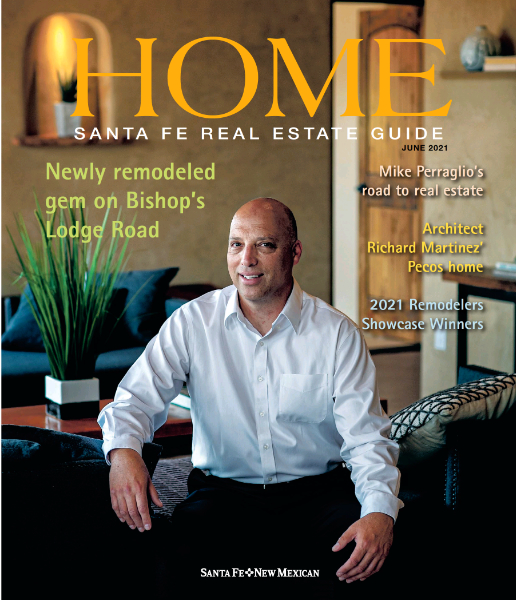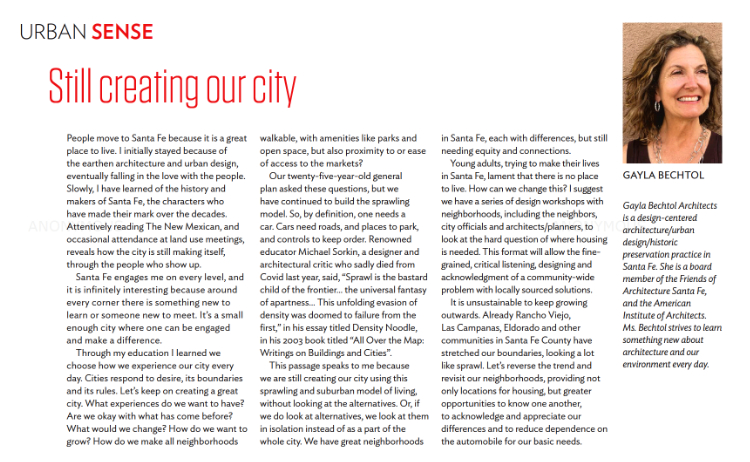No. 9 | Still creating our city
In the June edition of The Santa Fe New Mexican’s Home Magazine, I talk about how the city of Santa Fe is growing and the opportunities we have to help the city grow sustainably. Urban Sense.


Read The Article:
People move to Santa Fe because it is a great place to live. I initially stayed because of the earthen architecture and urban design, eventually falling in the love with the people. Slowly, I have learned of the history and makers of Santa Fe, the characters who have made their mark over the decades. Attentively reading The New Mexican, and occasional attendance at land use meetings, reveals how the city is still making itself, through the people who show up.
Santa Fe engages me on every level, and it is infinitely interesting because around every corner there is something new to learn or someone new to meet. It’s a small enough city where one can be engaged and make a difference.
Through my education I learned we choose how we experience our city every day. Cities respond to desire, its boundaries and its rules. Let’s keep on creating a great city. What experiences do we want to have? Are we okay with what has come before? What would we change? How do we want to grow? How do we make all neighborhoods walkable, with amenities like parks and open space, but also proximity to or ease of access to the markets?
Our twenty-five-year-old general plan asked these questions, but we have continued to build the sprawling model. So, by definition, one needs a car. Cars need roads, and places to park, and controls to keep order. Renowned educator Michael Sorkin, a designer and architectural critic who sadly died from Covid last year, said, “Sprawl is the bastard child of the frontier… the universal fantasy of apartness… This unfolding evasion of density was doomed to failure from the first,” in his essay titled Density Noodle, in his 2003 book titled “All Over the Map: Writings on Buildings and Cities”.
This passage speaks to me because we are still creating our city using this sprawling and suburban model of living, without looking at the alternatives. Or, if we do look at alternatives, we look at them in isolation instead of as a part of the whole city. We have great neighborhoods in Santa Fe, each with differences, but still needing equity and connections.
Young adults, trying to make their lives in Santa Fe, lament that there is no place to live. How can we change this? I suggest we have a series of design workshops with neighborhoods, including the neighbors, city officials and architects/planners, to look at the hard question of where housing is needed. This format will allow the fine-grained, critical listening, designing and acknowledgment of a community-wide problem with locally sourced solutions.
It is unsustainable to keep growing outwards. Already Rancho Viejo, Las Campanas, Eldorado and other communities in Santa Fe County have stretched our boundaries, looking a lot like sprawl. Let’s reverse the trend and revisit our neighborhoods, providing not only locations for housing, but greater opportunities to know one another, to acknowledge and appreciate our differences and to reduce dependence on the automobile for our basic needs.
Gayla Bechtol received her architecture degrees from Harvard University and from the University of Southern California. Gayla Bechtol Architects is a design-centered architecture/urban design/historic preservation practice that has created designs for homes, institutions, and urban spaces for nearly 30 years. Bechtol practiced deep democracy while leading the citizens of Santa Fe to the award-winning Santa Fe Railyard. She is a board member of Friends of Architecture Santa Fe.
Related Articles
No. 28 | Urban Sense: Dreaming of a Future Optimism
In the July edition of The Santa Fe New Mexican's Home Magazine,...




